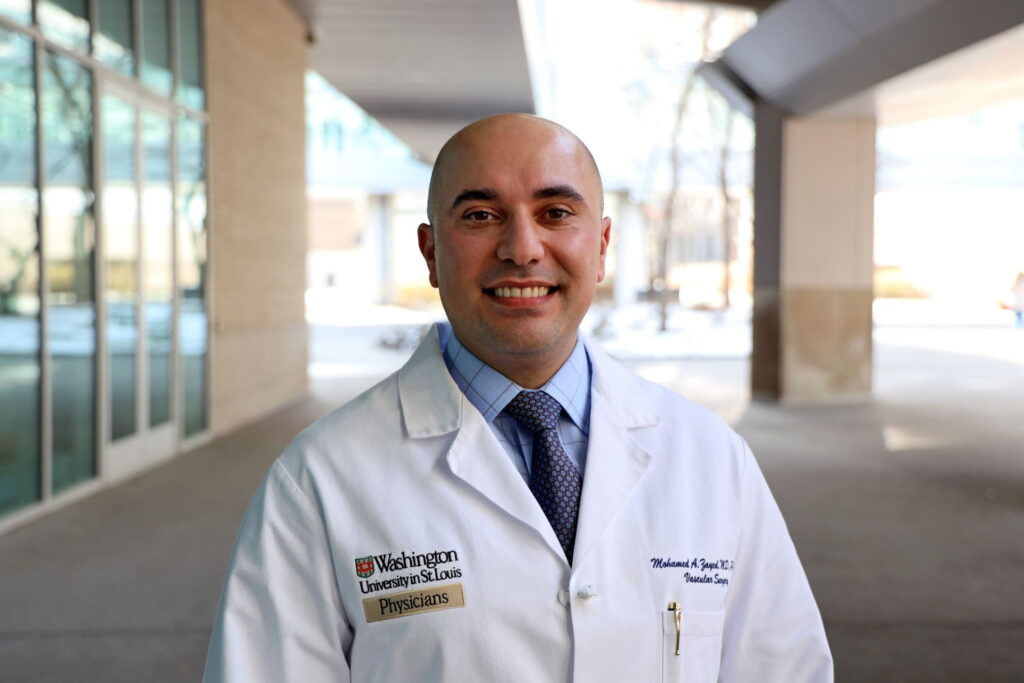Researchers at Washington University School of Medicine in St. Louis and Caeli Vascular, Inc., have received a $2 million grant from the National Institutes of Health (NIH) to investigate treatments for vascular disease.
The goal of the research is to develop innovative and safe surgical tools to treat deep vein thrombosis (DVT) and pulmonary embolism (PE), two critical vascular pathologies. The grant, a Phase II STTR from the National Institutes of Health, is a two-year award that provides resources to bring a new vascular surgery device through FDA approval. The work is a partnership between Washington University in St. Louis and Caeli Vascular, a St. Louis-based start-up focused on treatments for DVT and PE.
The device, licensed by the Washington University Office of Technology Management, will be the first sequestered therapy device on the market, and may offer safer procedures for removal of DVT.
“The new system aims to allow me to work in a confined space while removing a DVT, and will hopefully enable me to make sure that small parts of the DVT don’t break off as embolus leading to complications like PE or a stroke,” says Associate Professor of Surgery and Radiology Mohamed Zayed, MD, PhD, the chief medical officer of Caeli Vascular and the Washington University principal investigator on the project. “This sequestered therapy approach may also allow me to use drugs that break up DVTs in a way that prevents the drugs from spreading all over the body, and may allow me to break up clots more aggressively with an agitator tool.”
The team will test whether all of this can be done with one single device.
“The breakthrough behind this technology is a treatment zone that is completely sequestered from the rest of the vasculature, along with a system for flushing out all of the drugs and fragments of the DVT,” said Guy Genin, PhD, chief technology officer at Caeli Vascular. “The flushing system aims to rid the body of drugs and DVT fragments without causing any substantial injury to the vein.”
The approach was inspired by research at the NSF Science and Technology Center for Engineering Mechanobiology that uncovered sequestered healing strategies used by plants following injury. The translation to a patented technology arose from unique cross-disciplinary interactions at the Washington University Center for Innovation in Neuroscience and Technology (CINT).
“Washington University is unique as a fertile ground for enabling cross-disciplinary initiatives like this that improve patient care by harnessing discoveries and talents across traditional fields,” said Chief of the Division of Neurotechnology Eric Leuthardt, MD, who is also the chief scientific officer at Caeli Vascular and director of CINT. “By identifying critical issues and breakthrough solutions, the project that this grant funds embodies our highest aspirations at CINT.”
“With our strong start-up culture and an underserved local population that is particularly susceptible to a range of pathologies that give rise to DVT, St. Louis is the perfect place to be developing these technologies,” said John Hardin, MBA, CEO of Caeli Vascular. “This government partnership to support innovation in vascular surgery will have an important local impact.”
“This grant will amplify the impact of Washington University innovation on the local St. Louis economy and health, and help St. Louis bring an important new class of surgical tools to patients,” said Stacey Liekweg, MBA, COO of Caeli Vascular and the company’s principal investigator on the grant. “We are proud to be a partner for the important local impact that Washington University has on the St. Louis community, both in terms of economics and public health.”
